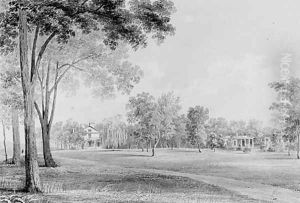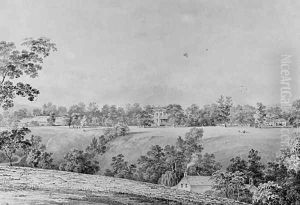Thomas Kelah Wharton Paintings
Thomas Kelah Wharton, born in 1814, was an English architect and artist whose life, although brief, left a lasting impression through his detailed and evocative sketches. Wharton's work is most remembered for its intricate observations and depictions of both the architectural and natural landscapes he encountered, particularly during his time in the United States. Despite the potential for a longer career, Wharton's life came to an early end in 1846, at the age of 32.
Wharton's journey as an artist began in England, where he was born and initially trained. However, it was his move to the United States that marked the beginning of his most productive and creative period. During the 1830s and 1840s, America was a burgeoning nation, expanding westward and rapidly developing its cities. Wharton was captivated by this transformation, and his sketches from this period provide a unique glimpse into the era's urban and rural landscapes. He had a particular interest in the architectural styles emerging at the time, and his work often detailed the structures with an architect's precision combined with an artist's flair for beauty.
Despite his evident talent and unique perspective, Wharton's contributions were not widely recognized during his lifetime. His works were primarily personal or commissioned by private patrons, limiting their public exposure. It was only posthumously that Wharton's sketches gained the appreciation they deserved, being recognized not only for their artistic merit but also for their historical value. Today, Wharton's drawings serve as important documents of the period, offering insight into the architectural and environmental context of early 19th-century America.
Thomas Kelah Wharton's legacy is that of a gifted artist who captured a transformative period in American history with a keen eye for detail and a deep appreciation for his surroundings. His sketches continue to be studied and admired for their beauty and historical significance, ensuring that Wharton's impact on the fields of art and architecture endures well beyond his tragically short life.






